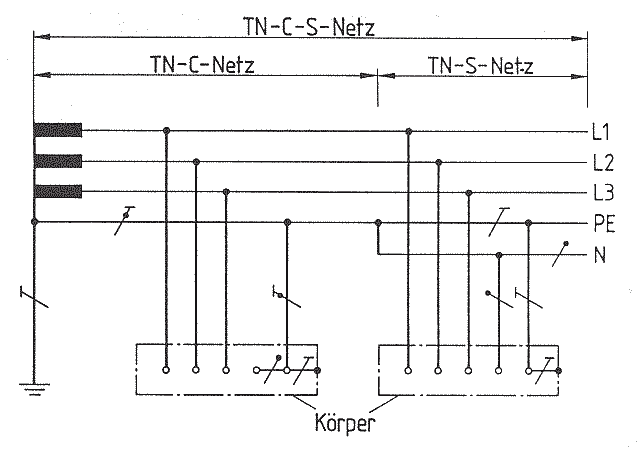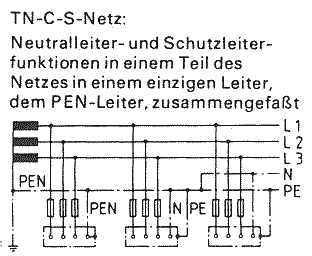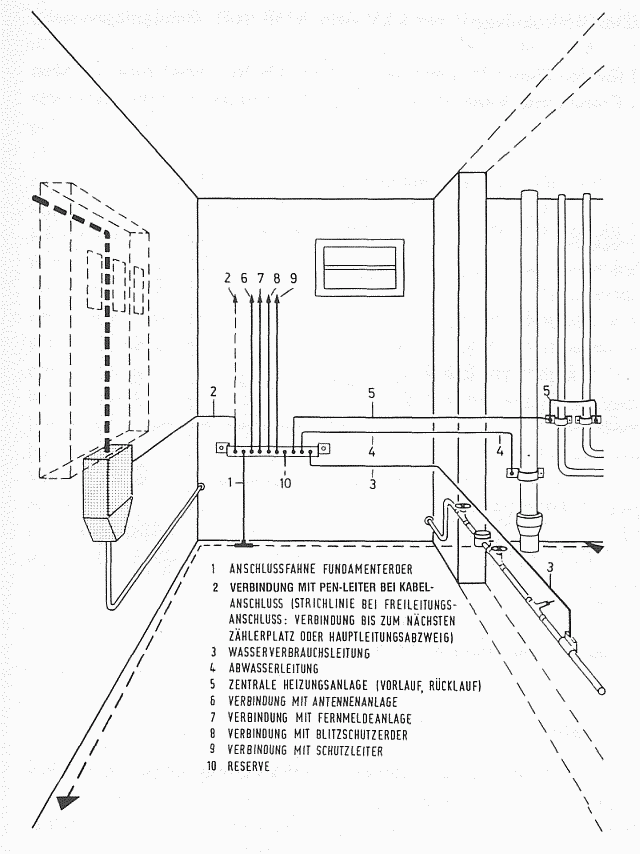What do the technical terms mean?
Electrical engineering |
Others |
| Tip: | To find your term quickly use the windows search function by pressing 'CTRL+F' and continue searching with 'F3'. |
- Earthing
- Transported water carries electric charges, generating voltages. Thus, heating pipes can carry an induced potential generated by the pumped water. This voltage generates currents and these in turn produce an electric field. In the same way, metallic pipes act like an antenna on all other electrical fields of higher frequency. Thus, the potential of the heating pipes must be earthed with an extra cable to prevent damage to the system and to your health.
All heating and water pipes have to be bridged on one central point and have to be connected to the equipotential bus bar of the house. (Cable 5) - Mains structure
- "Energy comes out the wall." This is a widely-held belief, but slightly complicated by what is behind the wall. This is the way the wiring has been installed (sometimes in the most surprising way!)
A small, but measurable voltage loss always occurs when currents run through cables. The higher the frequency, the greater the loss. In the diagram below, the left side (TN-C mains network) is normally used to conduct electrical energy to the floor distribution box. The total amount of current needed for the flats on one floor requires the use of cables of cross-section >10mm². Downstream of the floor distributer a TN-S mains structure with smaller cross-sections and (therefore) a separate protective earthing wire is used (right side). The entire structure is a TN-C-S mains, which is a potential hazard for you and your electrical devices - especially in a LAN.
This concept from 1900 works wery well if purely ohmic load are connected. With inductive or capacitive loads, i.e. motors or capacitors you will get problems. Today, electronic power packs are used everywhere. These generate strange signals currents containing many harmonics coupling in everywhere by naturally occuring capacitance. For these currents, a 'normal' conductor acts as a resistor and an antenna.
Connecting the protective earth PE and the N-conductor you will get the high-frequency currents across all protective earth conductors of your remaining mains network. The protective earth PE was designed to protect you or your computer case! The higher the mains load due to current or frequency, the higher is the voltage of the PEN against earth - and consequently that of the 'protective earth conductor'. Currents always seek the way of least resistance (as we all do!) and perhaps diffuse to earth through heating pipes.
[According to standard VDE 0100 part 300: The TN-C-S type of wiring is most frequently used in Germany. This type of copper wiring is appropriate for sizes larger than 10mm², but a personal hazard and a hazard for your computers.]The only way to prevent electronic contamination of your mains supply is to make sure that the two conductors are installed separately up to the equipotential bus bar. Earthing must include all metal parts of the building , i.e. heating, sanitary, and electrical installations!
Today, a voltage and current-free PE-conductor (PE = protective earth, green-yellow) is regarded as the most important conductor. The second-most important is the light blue N-conductor.Remedy
We recommend that you always use a universal PC-compatible TN-S mains network (shown right) rather than a TN-C-S mains network combination. The extra cost is negligible and your mains will be protected against unexpected high-frequency currents on the earth conductor. Later installation is possible by wiring the PE-conductor 'saved' between each floor junction box to the equipotential bus bar. Make sure that all bridges beween the N and the PE terminal blocks are removed and your PE-conductor will be really free of equalizing current!
[ contents ][ continue ]
- Potential equalization
- Unit: Volt, Millivolt, Ohms
- Potential equalization and earthing are extremely important safety mechanisms. The equipotential bus bar connects to the earthing of the buildig (foundation earthing) and supplies this potential as basis for the entire electrical installation of the house. Potential equalization was originally ment to protect your life in case of overvoltage, surges, shorts, or faults to frame in electrical devices.

In multi-storey installations,TN-C-S combinations using only a PEN conductor, which in any case only saves you a few pennies, will not do the job.
<=== 1 meter of 16mm² conductor cable for the separate PE conductor costs only 0.75 euro!

[Example of a house service room (Source: RWE Bauhandbuch)]
[ contents ][ continue ]